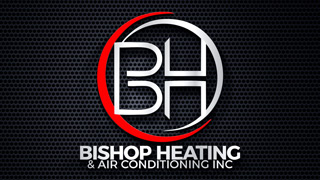
A furnace is usually a background player at home, keeping you warm in the cold winter months. It often won't be noticed until something breaks down.
One source might be that your furnace has a cracked heat exchanger. It’s a potentially dangerous issue, so it’s worthwhile to know the signs of a cracked heat exchanger and what to do if you suspect that might be the problem.
What Is a Heat Exchanger in a Furnace?
A heat exchanger helps move heat from the combustion chamber in your furnace to the air that moves inside the air ducts. It usually does this using coils or tubes that warm the air while serving as a barrier to keep gas created in the combustion chamber, called flue gasses, from getting out into your home.
Is a Cracked Heat Exchanger Dangerous?
Thanks to its central role, it isn't surprising that a damaged heat exchanger can be very dangerous. A damaged heat exchanger can allow dangerous gasses – like carbon monoxide, which can be lethal – to circulate throughout your home.
For this reason, don't ever run your furnace if you believe you're dealing with a cracked heat exchanger, as letting it run could make the whole household sick. Call an HVAC professional right away if you are worried your heating has a cracked heat exchanger that needs repair.
Four Signs of a Cracked Heat Exchanger:
- Furnace turns off: A cracked heat exchanger could cause your furnace to turn off.
- Odd Smells: If the air leaving your furnace has a strong chemical odor, it might be an indicator that gas is leaking through cracks in your heat exchanger. These byproducts, which can smell like formaldehyde, are a significant warning sign.
- Carbon monoxide alarm is triggered or you recognize health problems: If a cracked heat exchanger is releasing carbon monoxide inside your home, your carbon monoxide alarm could go off or household members might struggle with signs of carbon monoxide poisoning. Symptoms include headaches, dizziness, weakness, nausea, vomiting or feeling drowsy. If your alarm goes off or you feel unusually tired, get out of the home as soon as you can and then call for help.
- Soot: If you notice black sooty accumulating on the exterior of your furnace, it’s more evidence something could be seriously wrong.
What to Do if a Furnace Heat Exchanger is Cracked
If you worry your furnace has a cracked heat exchanger, call a pro well versed in furnace installation Bishop right away so they can examine your system and, if necessary, handle a furnace heat exchanger replacement. Costs should differ depending on the situation, but estimates can roughly suggest $1,000 to $3,000.
Fortunately, the good news is that heat exchangers are generally included in the warranty. You’ll want to confirm the warranty paperwork on your furnace, as while the warranty won't always cover the entire cost of repairs, it still may significantly shrink your bill.
How to Avoid a Cracked Heat Exchanger in Your Home
One of the most convenient ways to prevent a problem in your furnace overall is via regular furnace maintenance. Furnaces provide the best possible return on investment when they run efficiently. Calling a trained professional to inspect your furnace for worn-out parts, dirty filters and other likely problems can keep you from getting a big bill later on.
It’s also a good idea to review your furnace filters every few months – it’s ideal some filters be replaced every 90 days or sooner if they are dirty or grimy. While the filters aren't a part of the heat exchanger itself, the strain of dragging air through a clogged filter makes the entire furnace work longer to do its job. And the harder your furnace has to work, the more strain components like the heat exchanger will sustain.
